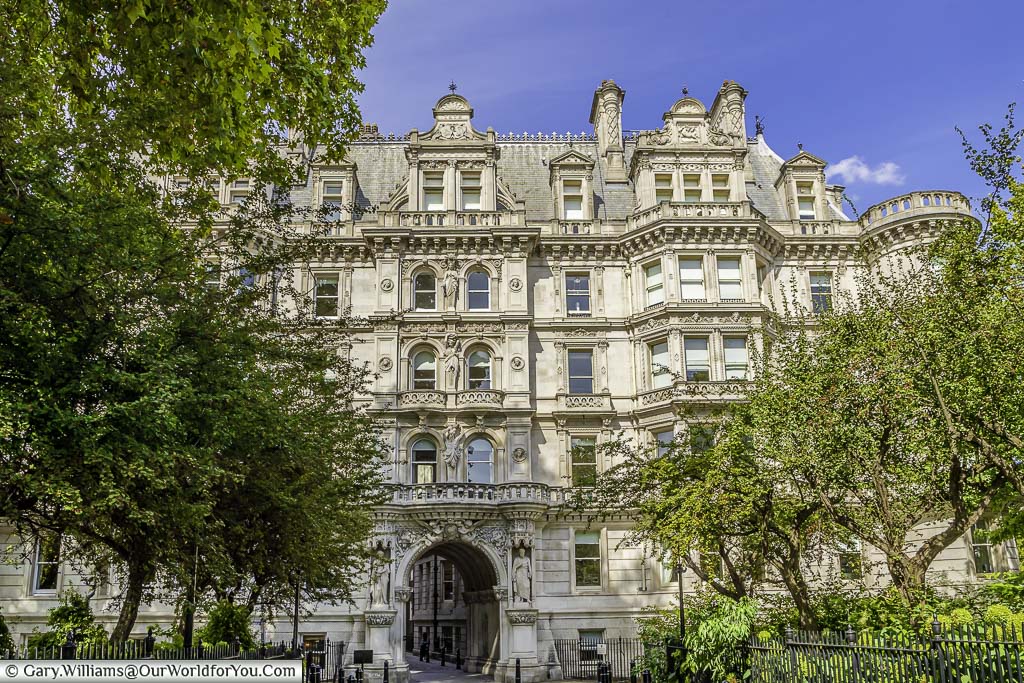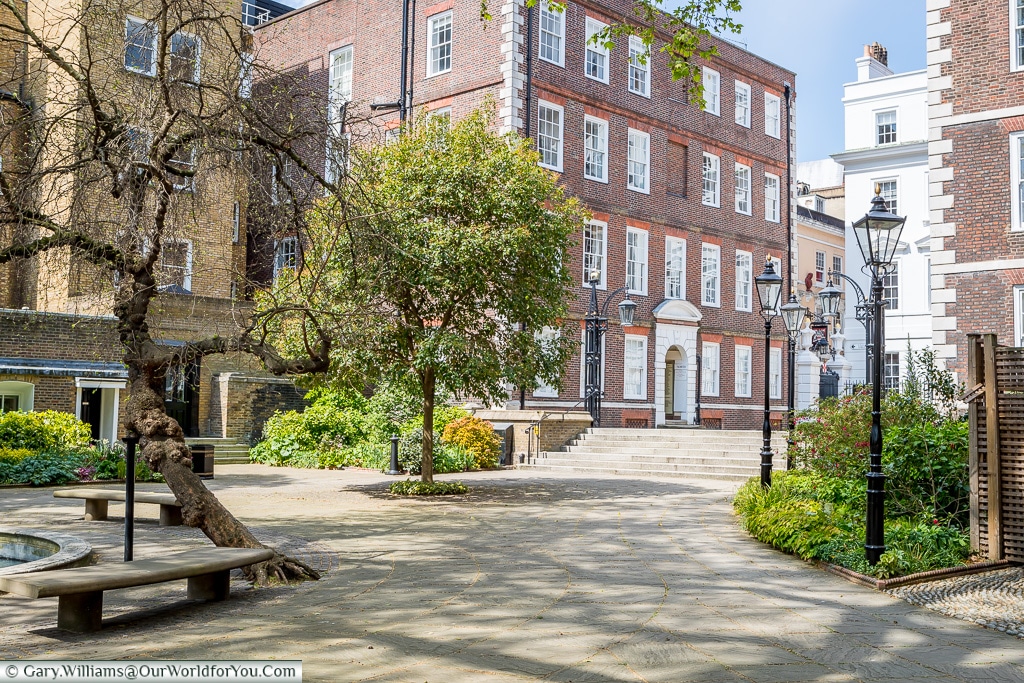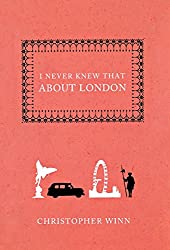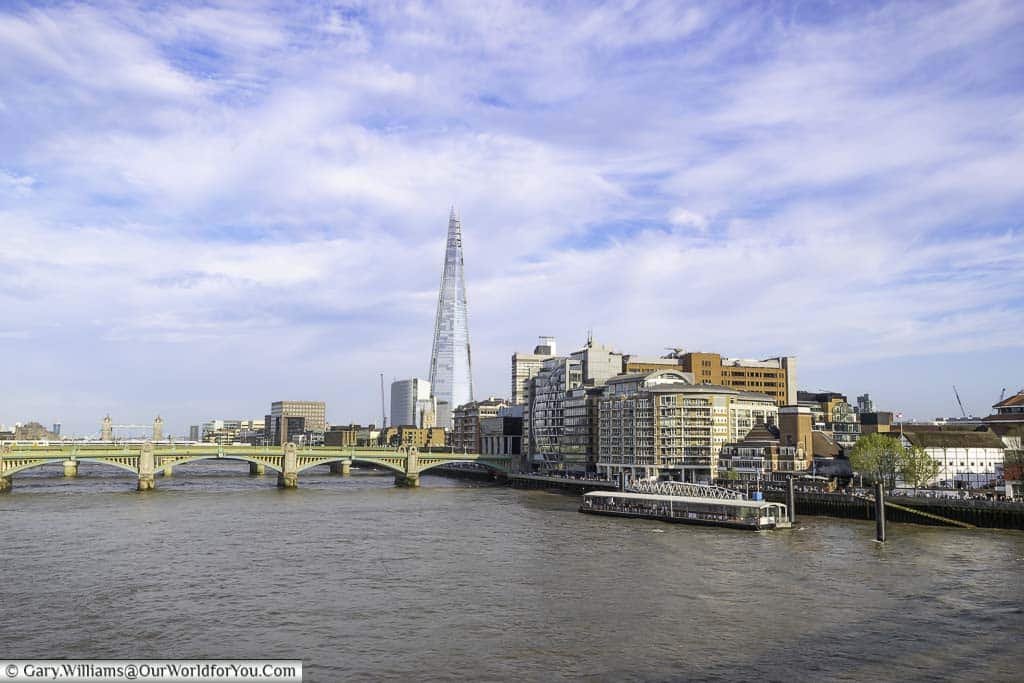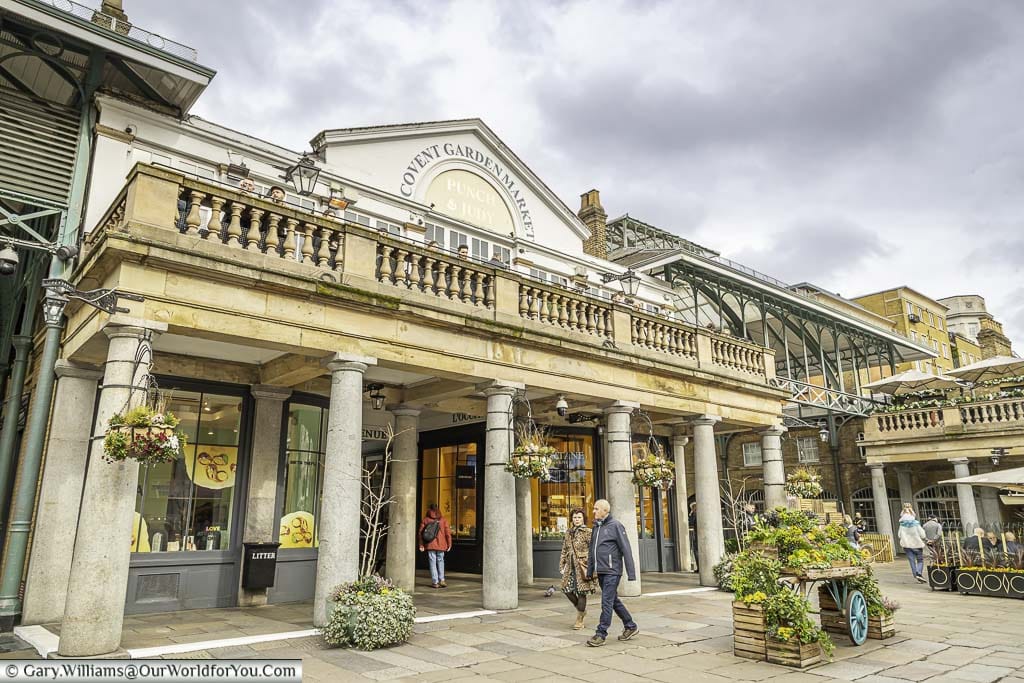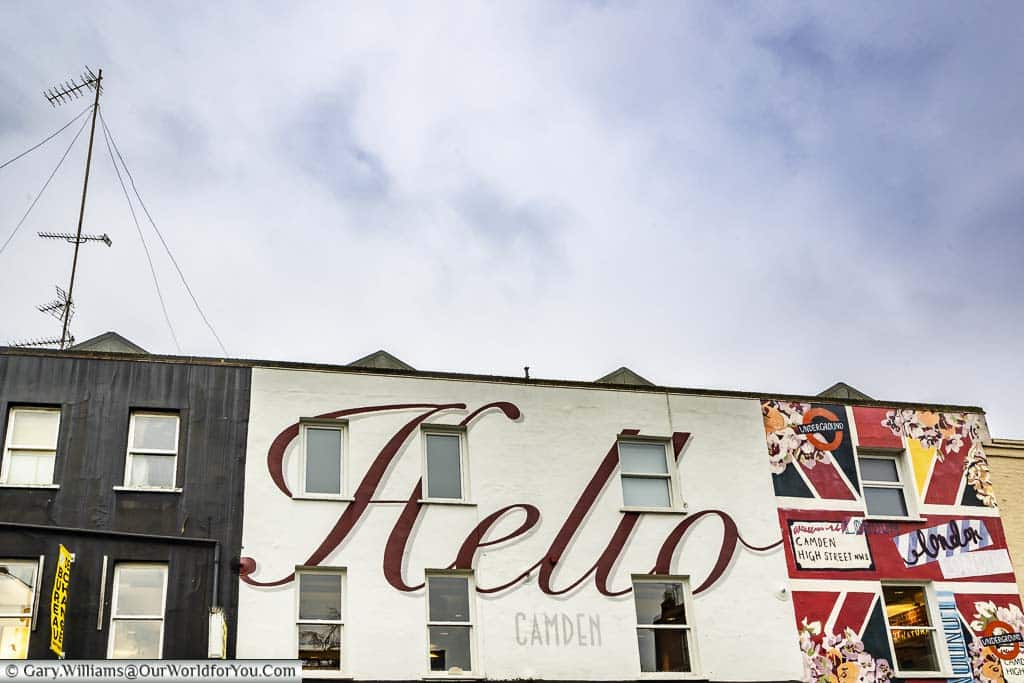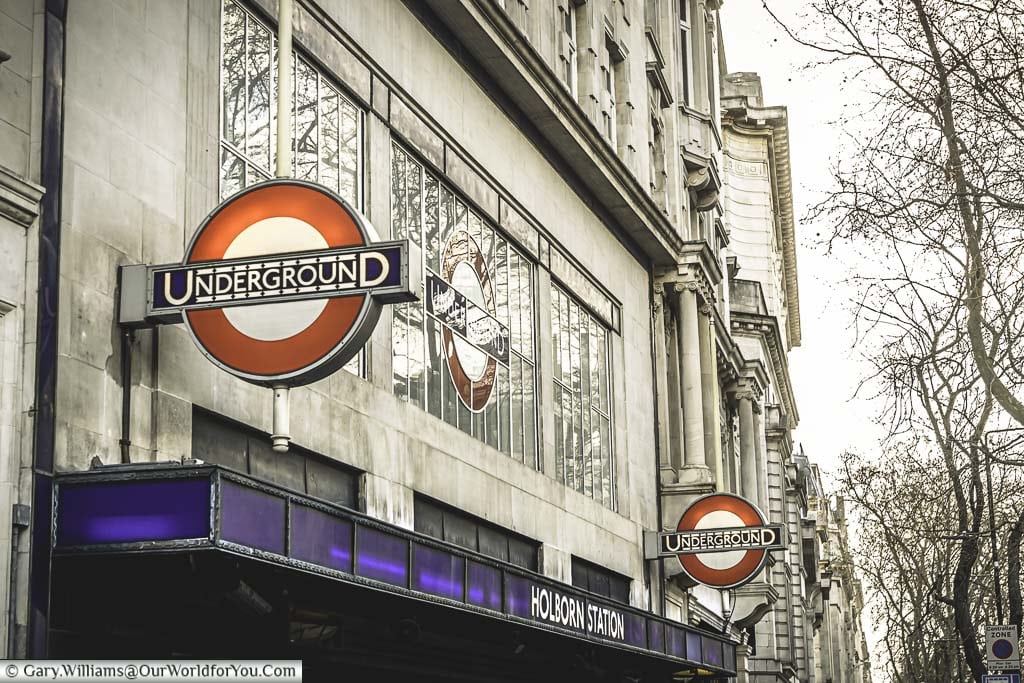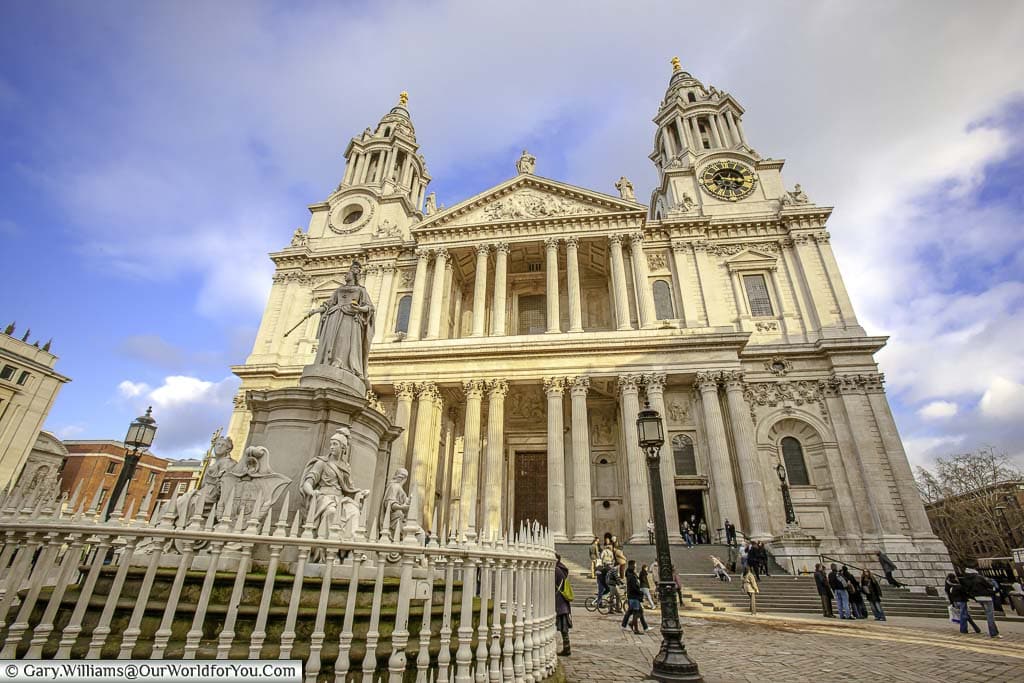Charming squares, Inns of Court and a shop that is quite curious
Let’s discover what there’s to see and do amongst the neighbouring lanes of Holborn Station.
Whenever you arrive at a railway station, it’s so easy just to pop out, keep your head down and trundle off along a route that is always familiar to you and so often the quickest.
For a change, head along a different lane, stroll down an unfamiliar street, and who knows what architectural gems you will discover.
Whenever we visit London, I love picking specific regions or districts and uncovering a little more than the obvious. So far, Spitalfields, Smithfield, Temple and Bankside have been my favourites.
However, in my posts on the ancient city of London, I’ve been taking a peek at what can be found within a short distance of a tube station. You’ll be intrigued to dig a little deeper yourselves when you discover how the centuries of time have evolved around Bank and Tower Hill stations.
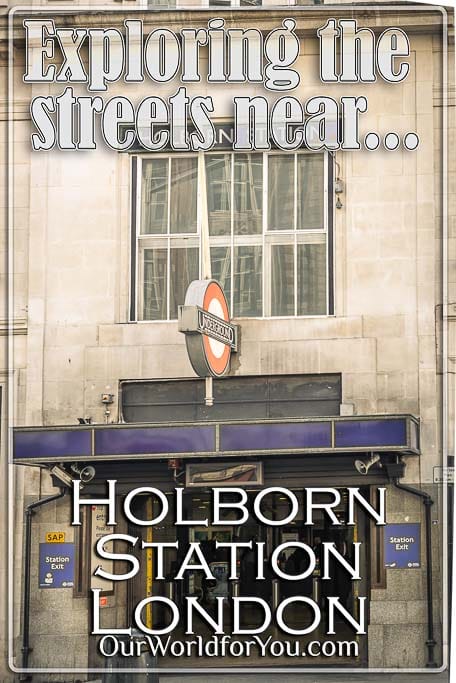
Where is Holborn?
How to get to Holborn
- By Tube
Holborn Underground Station is in Zone 1 of London’s tube network and is served by the Central Line and Piccadilly Line.
London’s underground network is so easy to use, just tap in and out with your phone, and your journey is underway. Check the Transport for London website for the latest updates.
If you’re visiting from further afield, check out the offers on Raileasy.
A little knowledge of Holborn Station
Tunnels and treasuresHolborn tube station threw open its doors in December 1906, and the additional planned line connecting to Aldwych Station opened the following year in November 1907, known as the Aldwych Branch line.
The Central Line platforms in Holborn Station were opened in 1933, when modern technology came nipping at its heels and lifts and escalators were installed.
Unfortunately, the Aldwych Branch line, which opened in 1907, no longer operates. The Branch line never became a very popular route through the decades, and just a few years after it first opened, passenger numbers were low. On several occasions, it had been at risk of closure, and in 1994, it finally did.
Having said that, Aldwych has undoubtedly witnessed its fair share of comings and goings. In 1940 at the start of The Blitz, the platforms were partially fitted out as an air-raid shelter. At the same time, the tunnels were also used by the British Museum to store priceless exhibits, including the Elgin Marbles.
The abandoned station still exists; nowadays, bookable visits can be made to explore the eerie platforms and tunnels.
Visiting the British Museum
Aeons of history and culture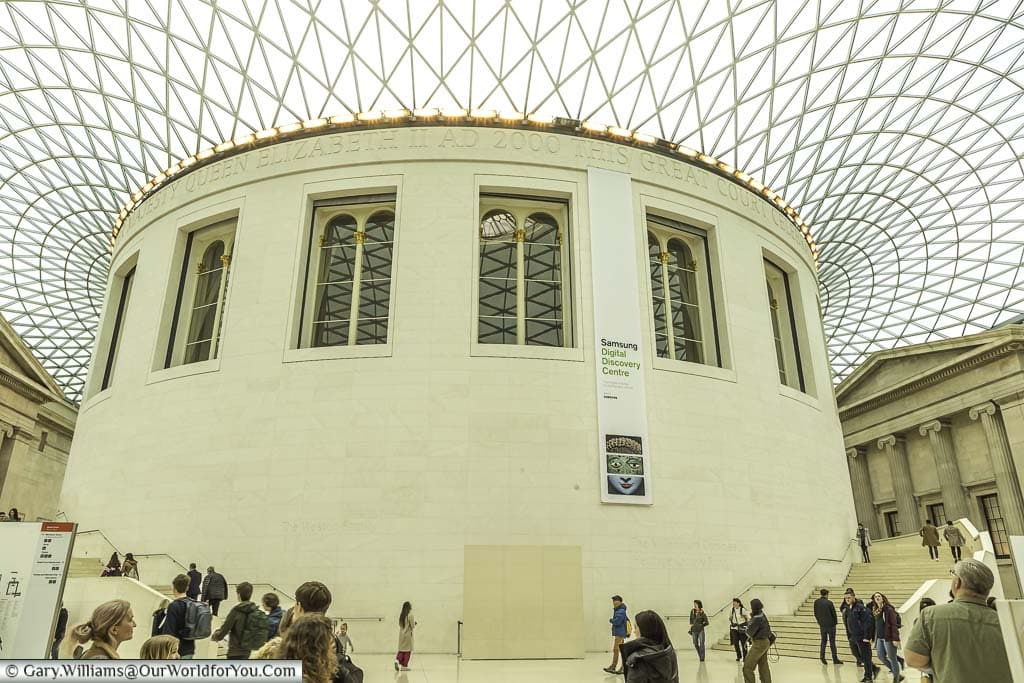
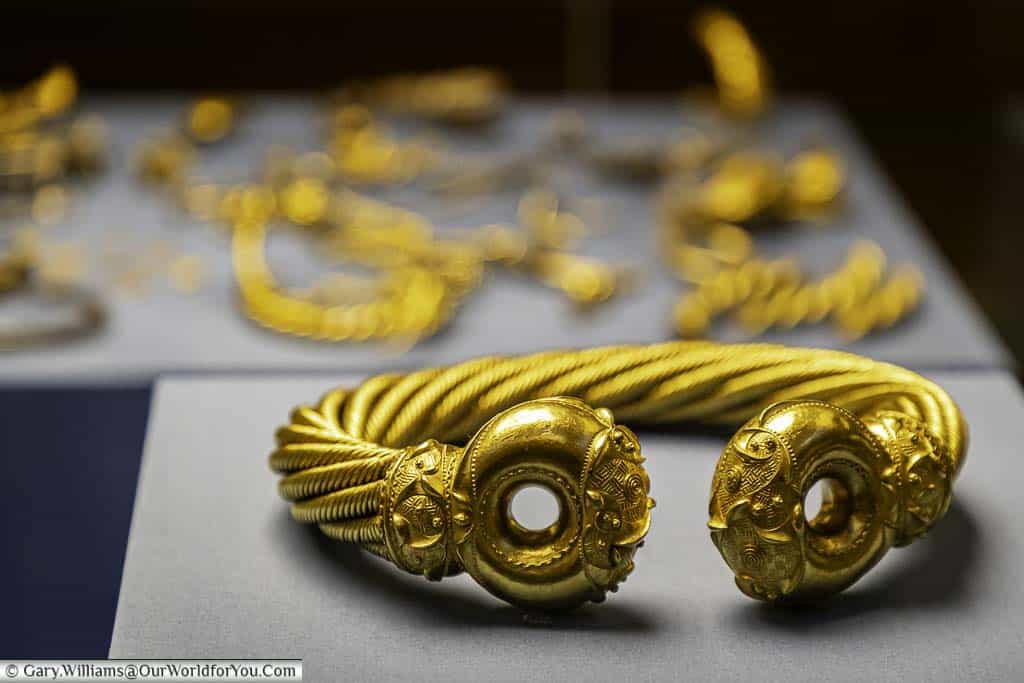
This is just the start; immerse yourself on an ancient journey through two million years of history and culture. You effortlessly stroll through 23 galleries passing artefacts and antiquities from all corners of the globe.
Visiting the British Museum is free of charge.
Where to stay near Holborn
The Old Curiosity Shop
Is there really a Dickens link?You’ll have to make a little detour to see 'The Old Curiosity Shop', which can be found on Portsmouth Street, as you wouldn’t necessarily be strolling by.
It’s incredible that this charming 16th-century shop has survived. It’s full of so much character, with modern-day buildings hugging its half-timbered walls from all sides.
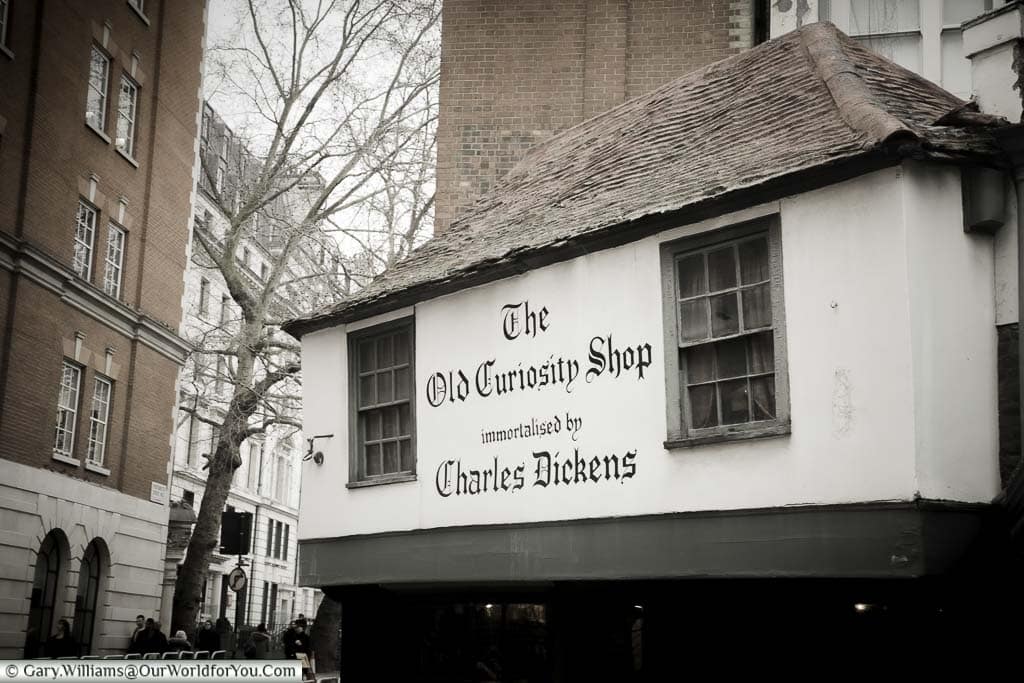
Discovering the Inns of Court
‘Legal Eagles’ abound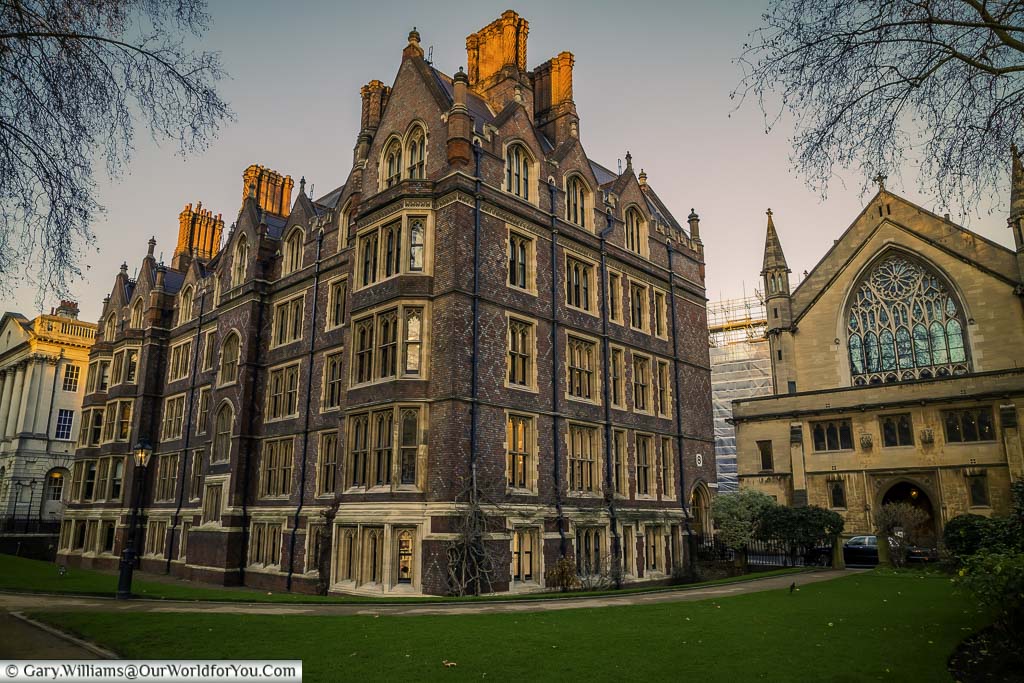
The Inns of Court are made up of four professional associations for barristers. These are Lincoln’s Inn and Gray’s Inn, within the boundary of the London Borough of Camden. Then Inner Temple and Middle Temple which are in the City of London. All have their own coat of arms.
I touch on the Inner and Upper Temples in my Temple tube station post.
You are free to wander through the lanes of the Inns of Court, although ensure you visit on a weekday when the legal fraternity is in full flow. These historic chapels, gardens, and courtyards are very restricted during the weekend.
Take a minute and enjoy the delightful gardens in Lincoln’s Inn Fields.
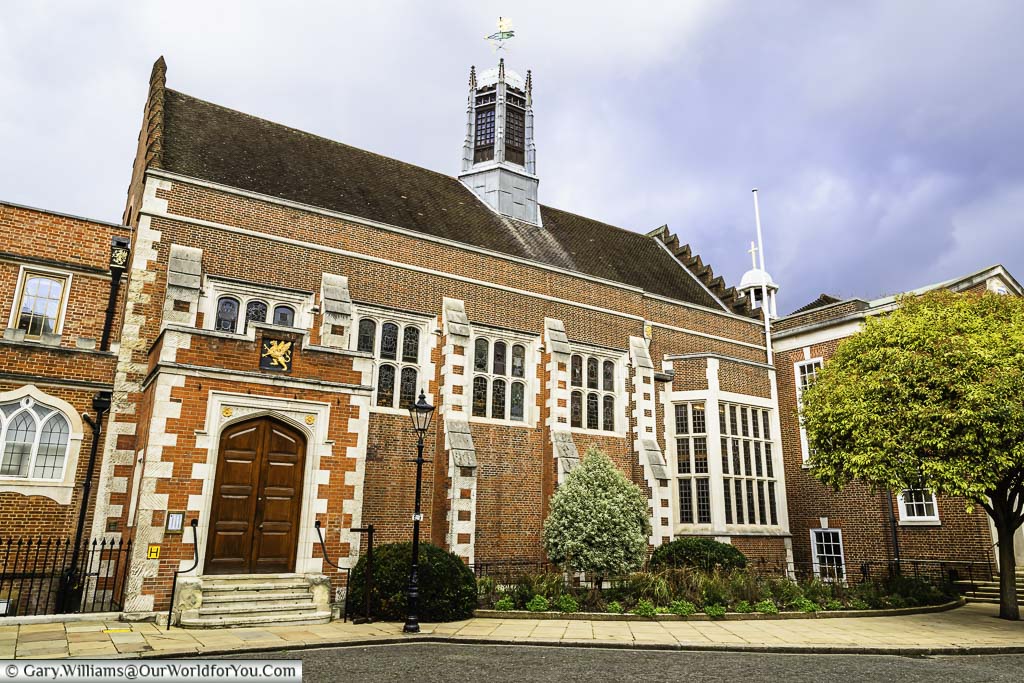
We have a little book on our shelves that we sometimes delve into when we're about to hit an area of London.
Packed full of historical facts, and broken down into the different regions of London, it's a great resource to help you see what's hidden in plain sight.
Available in Kindle & Hardback editions, it's an excellent addition to anyone's collection who loves London.
Telephone boxes on Carey Street
Hold the line caller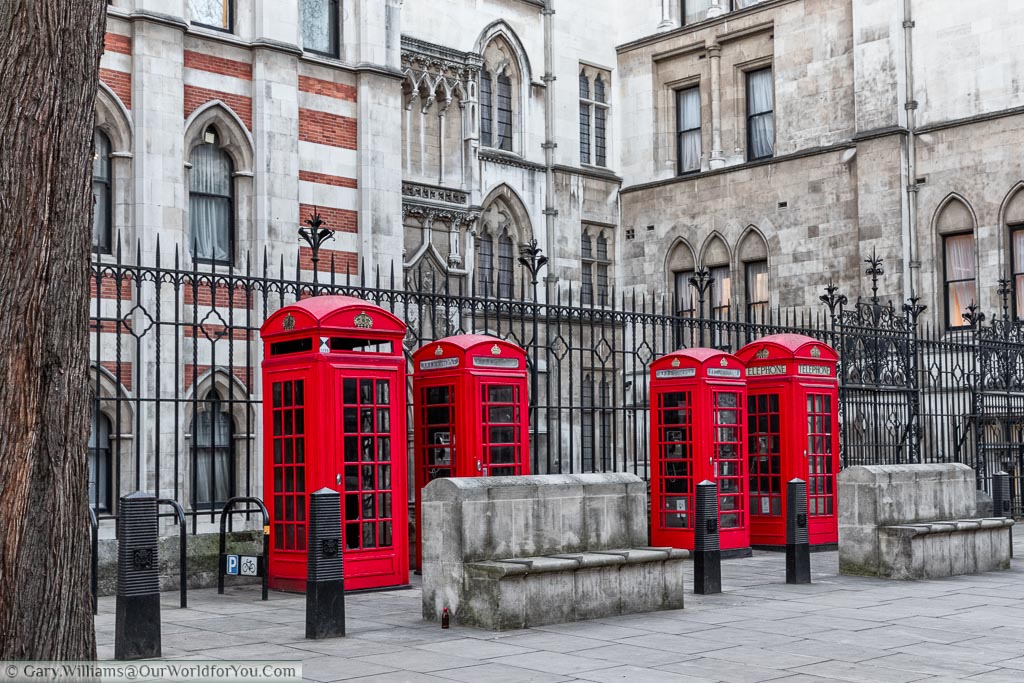
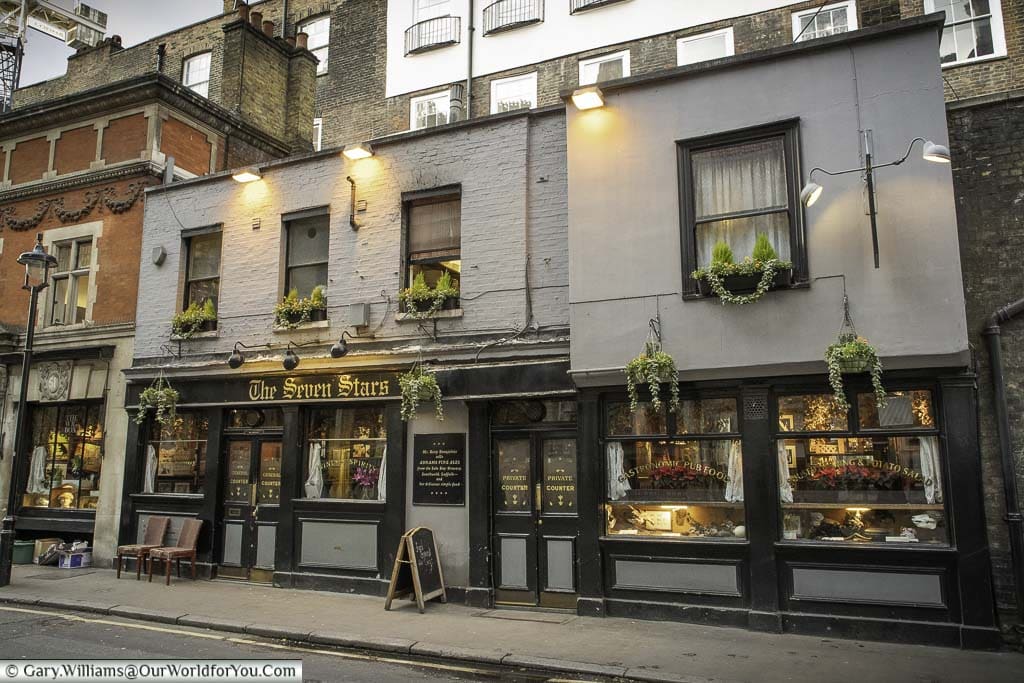
Visiting the Freemason’s Hall
Art Deco eleganceJust a short stroll southwest of Holborn Station is the Freemason’s Hall on Great Queen Street.
The Freemason’s Hall is free to visit, and once you step inside, you’ll be treated to an Art Deco sensation. On the first floor, there is an interesting museum where you can learn all about the history of Freemasonry.
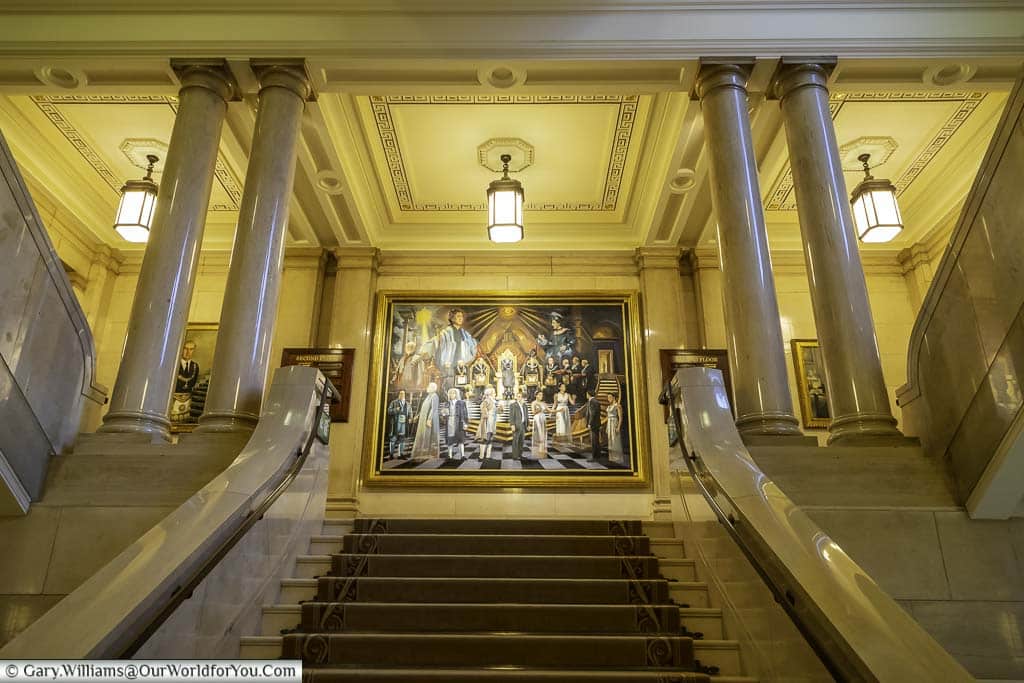
Masonic meetings have been held on this site since 1775; however, the present Freemason’s Hall, which is the third, was built between 1927 and 1933 to commemorate those who died during the First World War.
The Freemason’s Hall has also been captured on the silver screen many times. It was used in the 2016 film Assassin’s Creed, the TV series Spooks and also Spy and has been featured many times in the TV films of Agatha Christie’s Poirot.
Strolling Sicilian Avenue
A slice of Italy in Holborn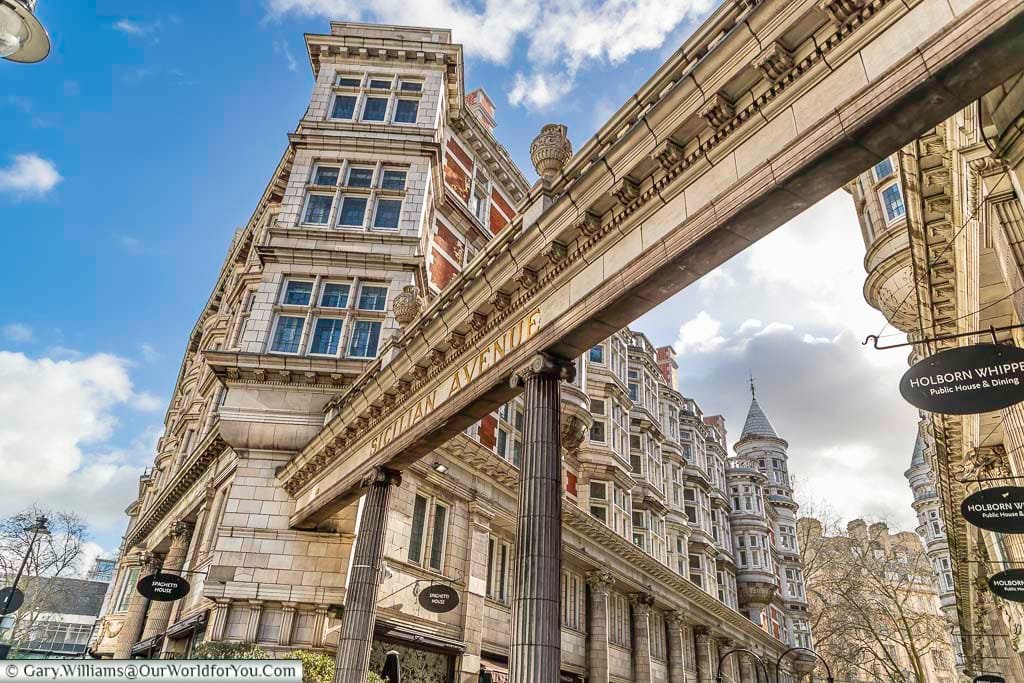
Lined with charming boutiques and restaurants, Sicilian Avenue was constructed in 1910 with Italian marble and traditional colonnades at either end, with intricate detail teetering across the top.
It’s only a tiny avenue; however, you undoubtedly feel the ‘la dolce vita’ sitting al fresco at one of the pavement cafés.
Charming Bloomsbury Square Garden
Site of a 17th-century duelIn this small region of London, there are quite a few elegant squares and gardens to be found, one I mentioned above is Lincoln’s Inn Fields; however, one particularly grand garden is Bloomsbury Square Garden.
Bloomsbury Square Garden is believed to be London’s oldest square and was developed in 1665 by the 4th Earl of Southampton and was then known as Southampton Square.
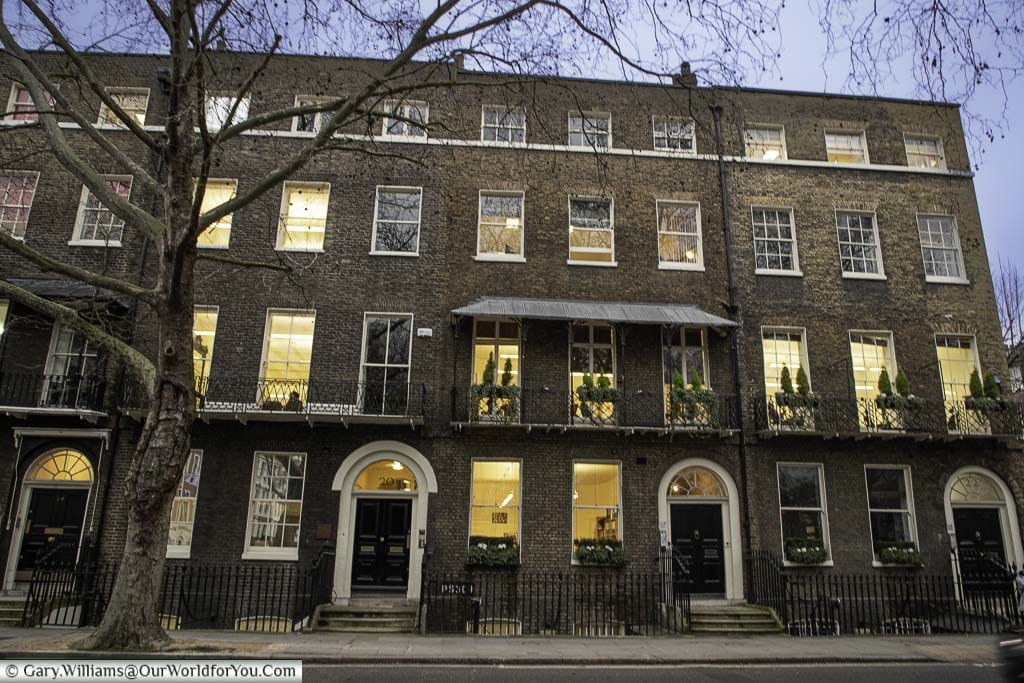
Bloomsbury Square was also the scene of an infamous duel in 1694 between a 23-year-old Scottish economist John Law and Edward 'Beau' Wilson. John Law killed Wilson with a single thrust of his sword.
Unfortunately, none of the original 17th–century buildings remain; however, many striking houses from the 18th and early 19th centuries exist.
Very close by to Bloomsbury Square Garden is the pleasant and often-overlooked Red Lion Square Gardens.
If you've yet to discover London and its ancient history, then let's start planning. I find these DK Eyewitness Travel Guides invaluable. They're extremely informative, easy to follow, and the pictures and maps tempt you into discovering more of those fascinating sites.
You can now grab a recently revised copy of this guidebook, so you won't miss a thing.
Visiting Russell Square
A slice of London historyJust a short hop north of Bloomsbury Square and close to the British Museum, we arrive at Russell Square.
Russell Square is one of central London’s largest squares and was laid out in 1804. On the southern and western sides of Russell Square, you can still admire some of the original large, terraced houses occupied by upper-middle-class families.
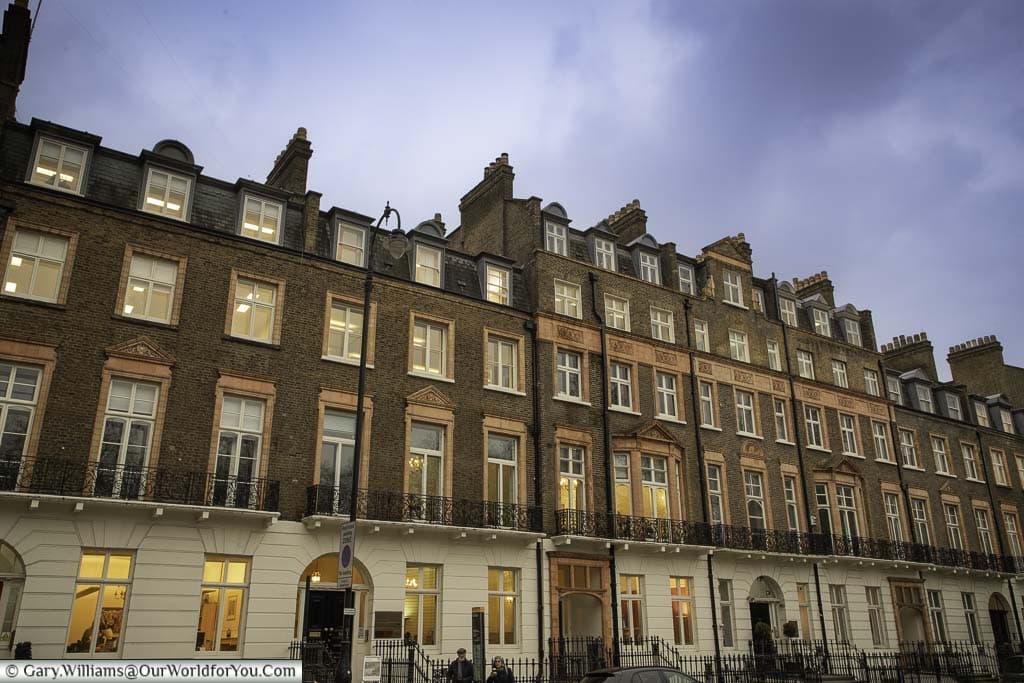
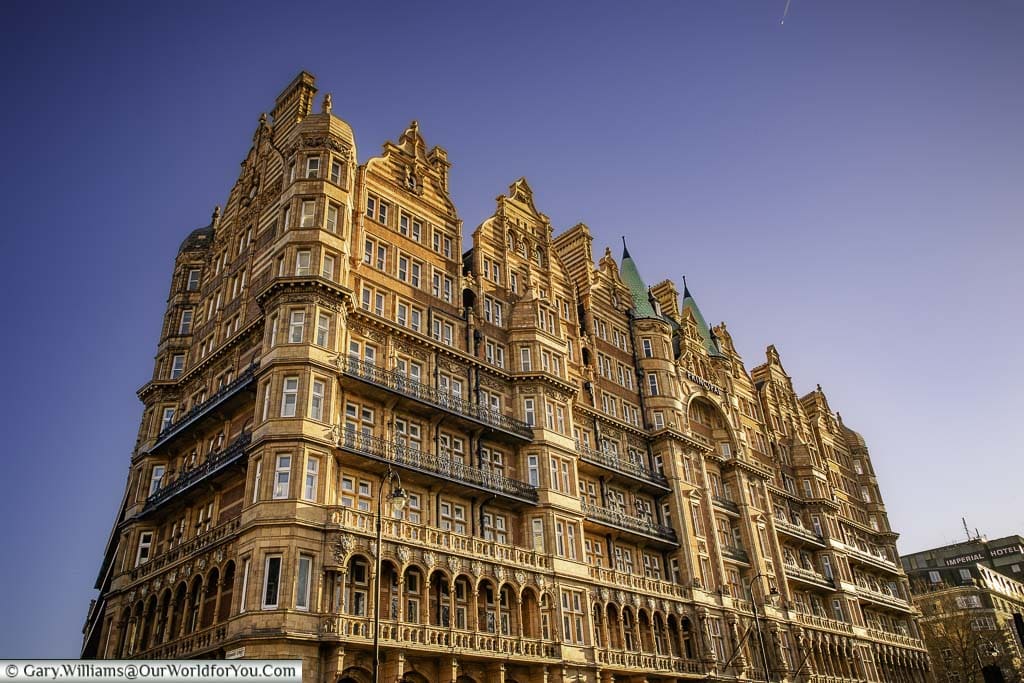
Explore London on foot
London Cabbie’s Shelters
And even a Horse Hospital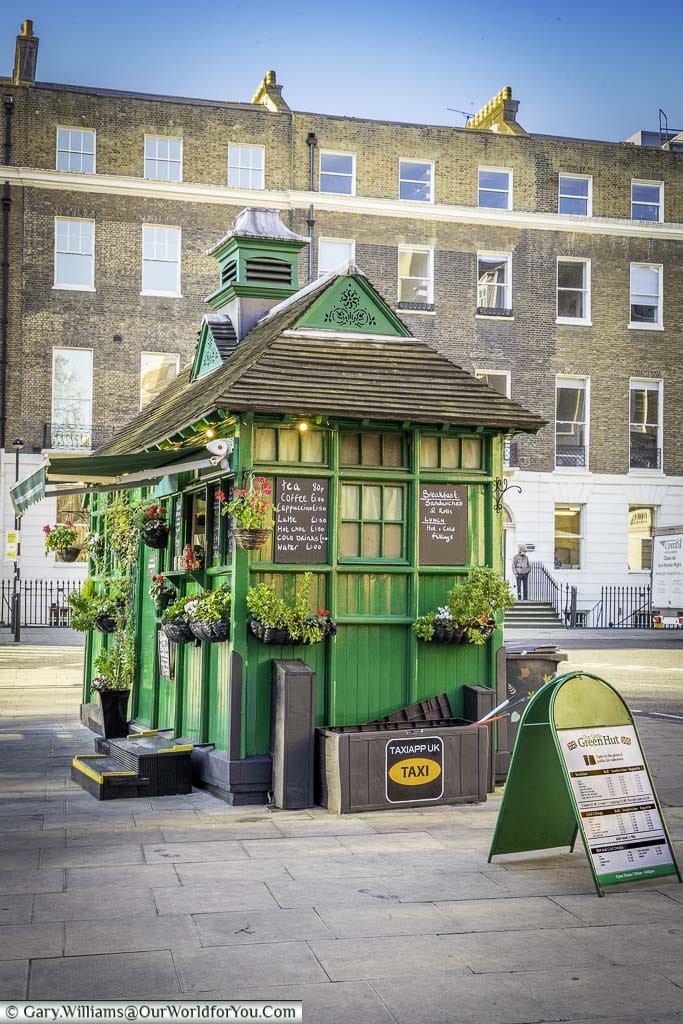
The cabbies shelters sprung up around London between 1875 and 1914. They offered a warm and dry place for cabbies to head to when they were in need of a brew or a bite to eat. The cabbies were also able to leave their taxis safely nearby. Gambling, drinking, and swearing were strictly forbidden in the shelters.
You won’t be allowed in if you are not a London cabbie. These quaint retreats are now Grade II Listed Buildings that are no larger than a horse and cart and can hold around 10 taxi drivers.
I love these quirky things about London.
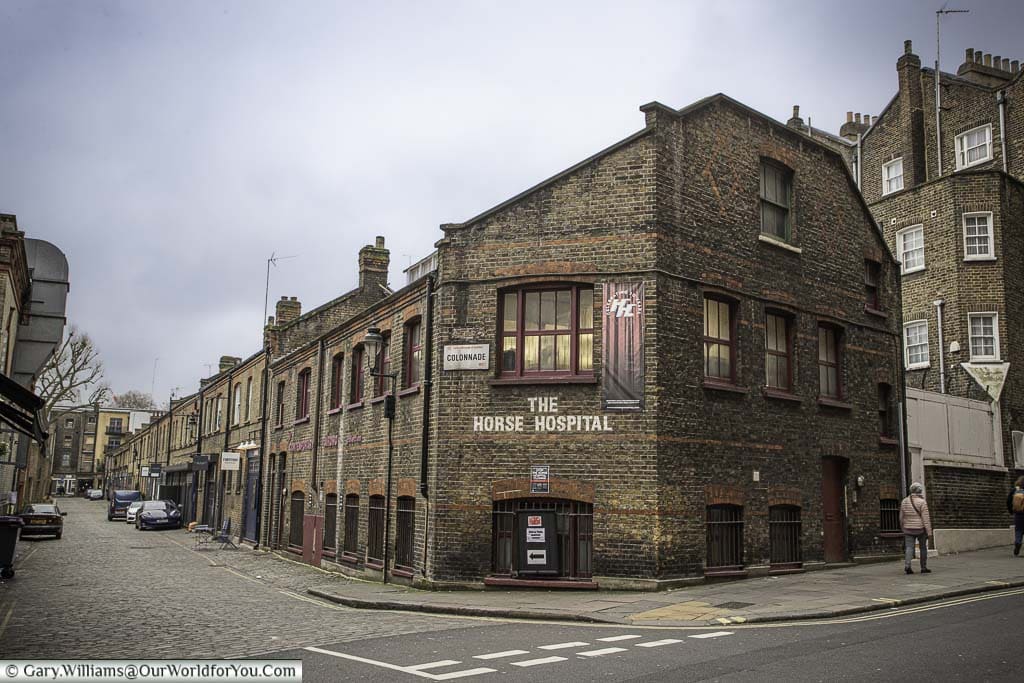
Well, talking of quirky things, did you know there was once a historic Horse Hospital just at the rear of Russell Square tube station?
The Horse Hospital was originally built in 1797 by James Burton, a renowned Regency and Georgian architect. The horse hospital, which is now a Grade II Listed independent arts venue, was once used for cab drivers to stable their sick horses.
The old, tiled floor and the concrete moulded ramps still remain along with iron tethering rings and hardwood slats to prevent the horses from slipping.
Tube Station Walks
We love to explore London on foot; a great way to break it into bite-sized pieces is to pick an underground station.
Why not browse our posts on tube station walks to find out what we uncovered in different districts?
Cittie of Yorke pub
Fancy a pint?If you need to rest those weary feet, we can highly recommend popping into the Cittie of York pub along High Holborn. This distinctive tavern is owned and operated by Samuel Smith’s Old Brewery.
There has been an inn on this site since 1430, and the present-day pub, which was built in the 1920s, is full of so much character and charm.
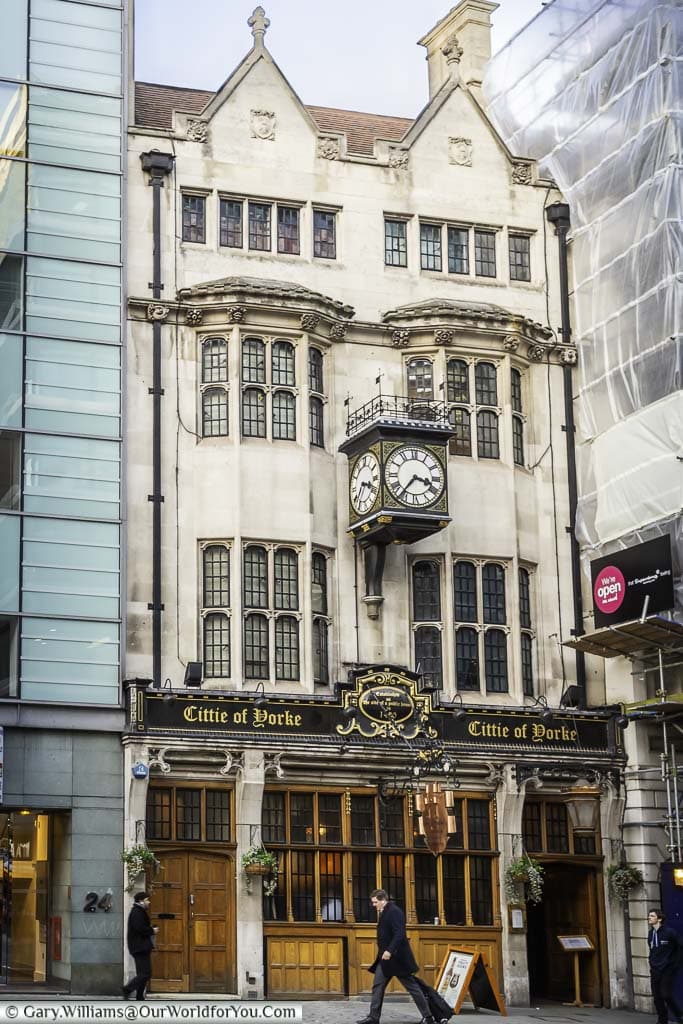
As you step into the main bar at the rear, you’re taken aback at how incredibly cavernous it is. The Cittie of York replicates a medieval Tudor Hall with a high-pitched roof and exposed beams.
Along one side of the pub is a far-stretching wooden bar, and on the other are Victorian-style wooden cubicles, where you could imagine many covert discussions have taken place.
A few Blue Plaques around Holborn
A secret agent and a Prime MinisterOnce again, we were on the trail of Blue Plaques around London, and occasionally not blue. I love spotting the blue plaques; it always leads me to dig deeper into the past of these historical people to discover their stories and fascinating lives.
There are countless plaques to be found around Holborn and Bloomsbury; we were forever crossing roads to read another tale.
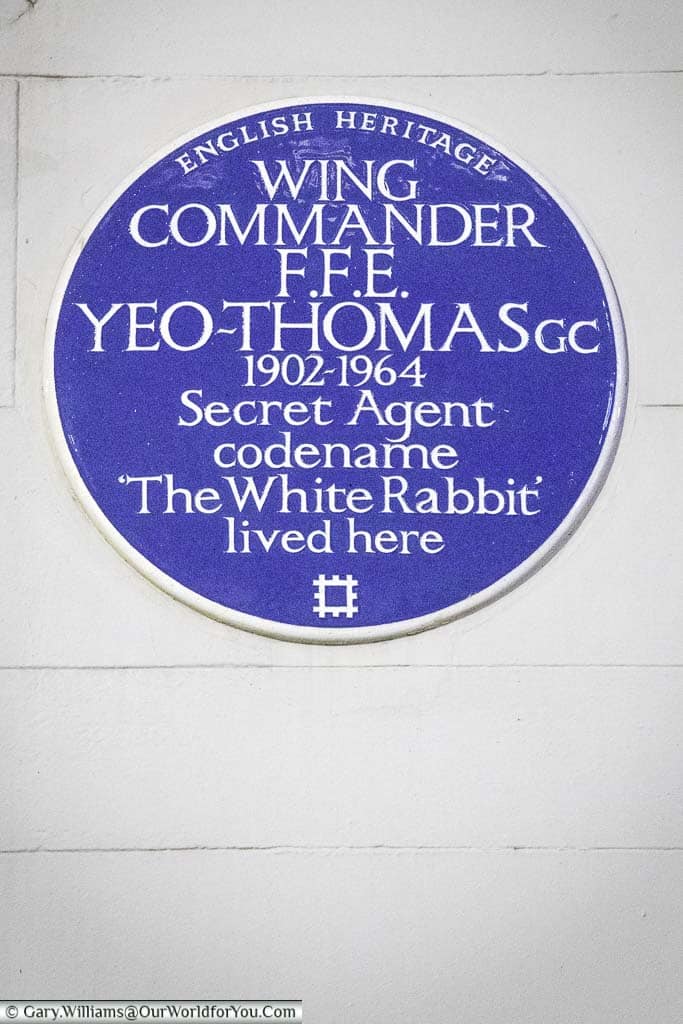
The first one I’ve chosen is for Wing Commander Forest Frederick Edward Yeo-Thomas, nicknamed “Tommy.” Tommy was a British Special Ops agent in the Second World War and was codenamed “The White Rabbit” by the Gestapo.
Tommy’s life as a secret agent was astonishing, often being captured and tortured, sent to prison of war concentration camps, escaping, and establishing numerous guises. He even spent time at Stalag XX-B and was an important witness at the Nuremberg Trials.
Yeo-Thomas was the first Second World War secret agent to be awarded the George Cross. Tommy’s Blue Plaque can be found at Queen Court, 24-28 Queen Square, London.
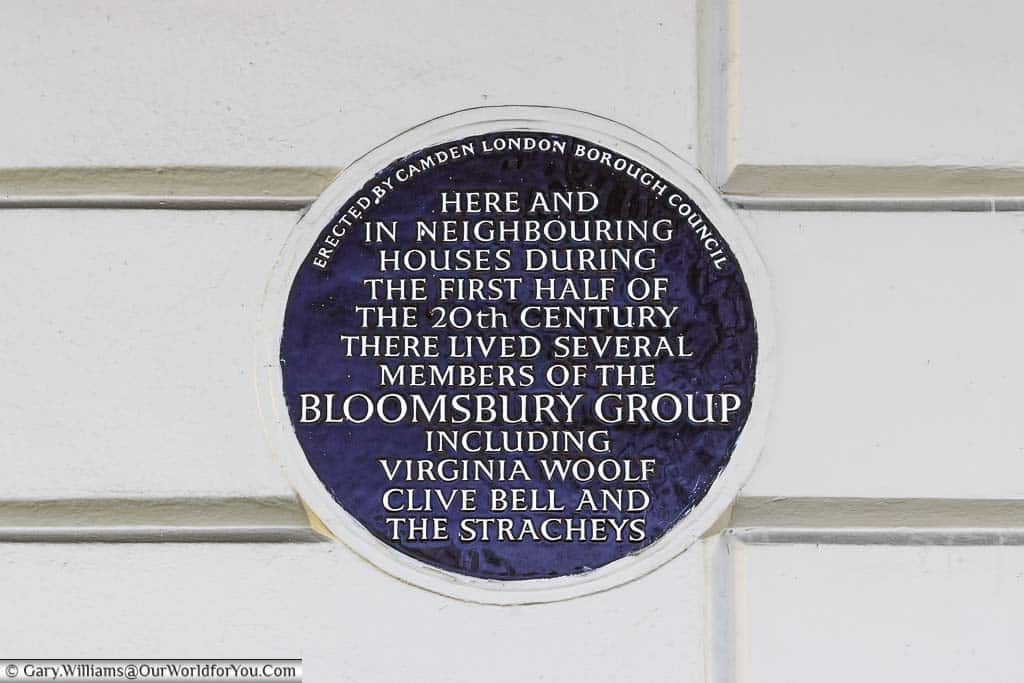
The next plaque was erected by Camden Council at 50 Gordon Square for the Bloomsbury Group. The Bloomsbury Set were a group of early 20th-century English writers, artists, and intellectuals.
They included Virginia Woolf, a pioneering English writer and her husband, Leonard Woolf, a political theorist, and author. John Maynard Keynes, an economist and philosopher; the famous novelist E. M. Forster known for A Room with a View and a Howards End, to name a couple and Lytton Strachey, a critic and writer and founding member of the Bloomsbury Group.
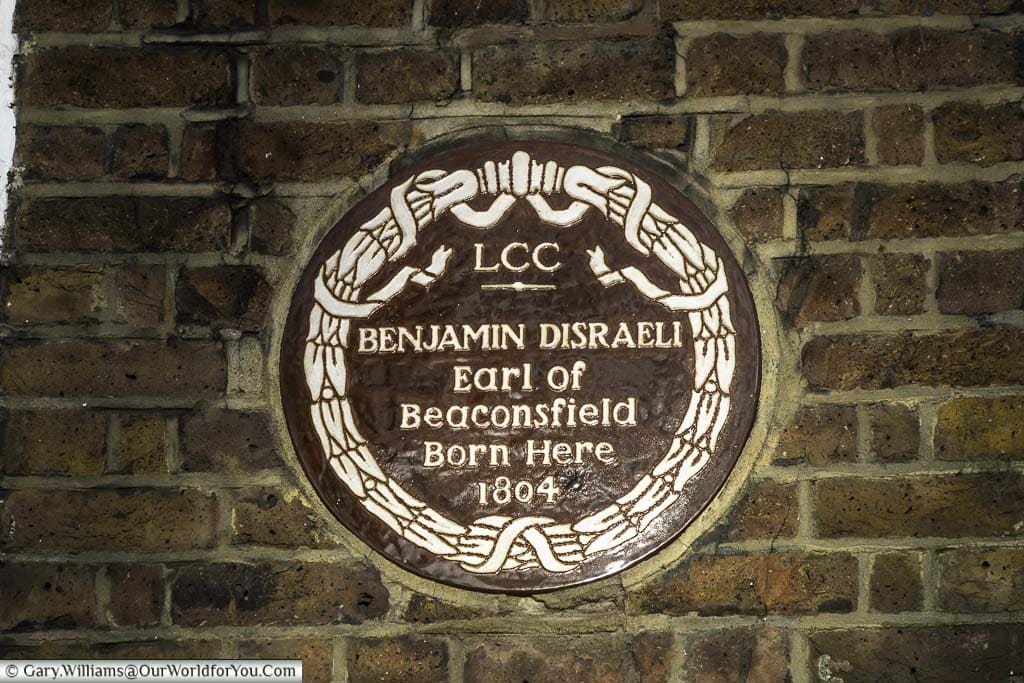
The brown plaque for Benjamin Disraeli was erected in 1948 by London County Council at 22 Theobalds Road, Holborn, to mark where he was born. The original plaque was erected in 1904 and was unfortunately destroyed during the Second World War.
Benjamin Disraeli, the Earl of Beaconsfield, was a British Statesman, writer and Conservative politician who served twice as the UK’s Prime Minister. Disraeli’s first term as Prime Minister was relatively short, from February to December 1868, taking the baton from the Earl of Derby.
His second tenure was longer, from 1874 to 1880.
It’s good to talk!
* This post may contain links to affiliated sites where we earn a small commission at no additional charge to you.
